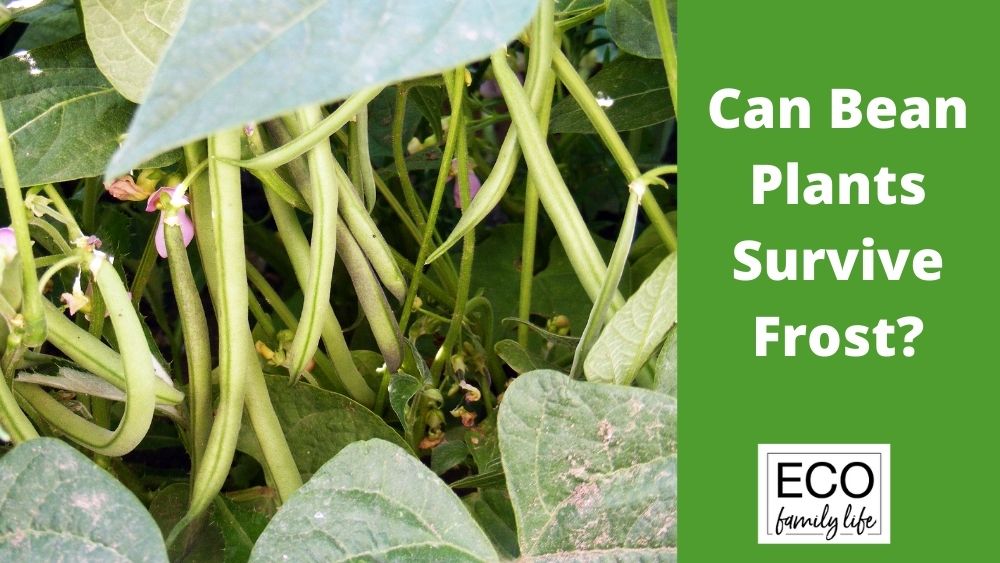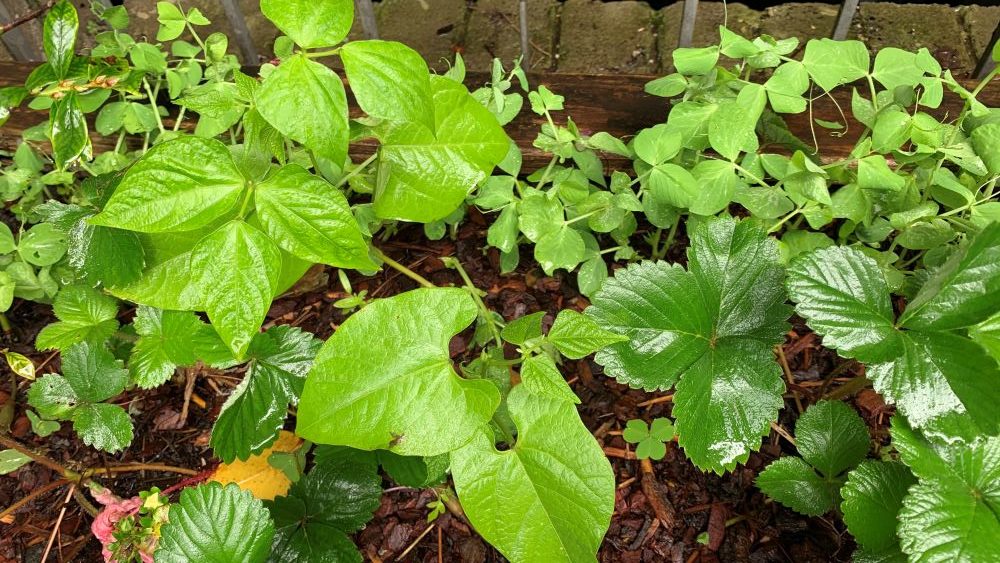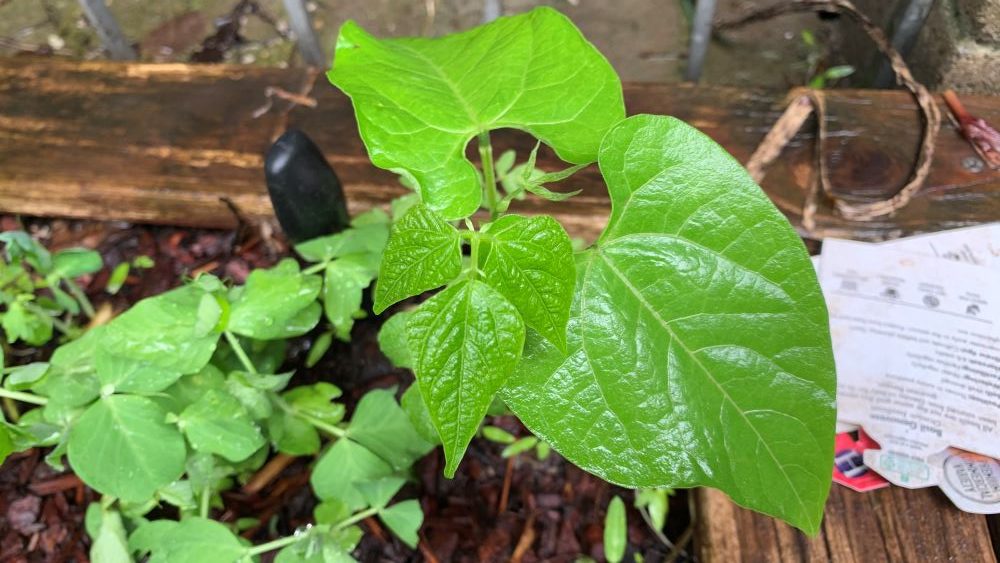Runner and climbing beans are not frost hardy and will be damaged quickly by even a slight frost overnight and in the early morning. Sow runner and climbing beans them after frosts have passed in late spring. You can raise them in a greenhouse in early spring if you want an early harvest.
Broad beans leaves and stems will tolerate frosts but they flowers can be damaged. They are a cool season crop so are more frost tolerant than other bean varieties.

There is a rare bean called ‘Frost’ which was widely sown in the late 1700’s in England. It was cold tolerant and could survive. This variety is tricky to find but check out the link at the end of my article if you live in Australia and want to try this bean.
This article will explore all you need to know about frost damage and beans, how to protect your bean plants and a rare bean variety that is cold hardy.
Are Runner Beans frost hardy?
Runner beans are not frost hardy and will be damaged quickly by even a light frost. If you live in a frost prone area, temperate, Mediterranean or cold climate then plant runner bean seeds in late spring after frosts have passed. You will get a summer harvest in around 12 weeks.
I am growing French green beans this year over winter to see if I can get a harvest. I live in a sub-tropical climate that usually has warm, dry winters. We can occasionally get a frost in late winter but I am growing my beans near a masonry wall that protects them.
Are Climbing Beans frost hardy?
Climbing beans are not frost hardy and their flowers, stems and leaves can all be damaged by frosts. Beans have delicate leaves that are quickly killed off by the cold frosts.
You can protect your beans from frosts if they are rare by planting them near a masonry wall. The wall will absorb the heat from the sun during the day and radiate it keeping the air warmer around the beans and stopping the bean plant from freezing.

If you live in an area that gets regular frosts or snow, wait until the snow has melted and the weather has warmed in late spring before planting out your climbing beans.
Are broad beans frost hardy?
Broad beans are more frost hardy than climbing or runner beans. They are a cool season crop so can be planted in early autumn. They will grow beans over winter and will be ready for harvest before the warmer spring weather arrives.
These plants will tolerate frosts but their flowers can be damaged if the frosts are heavy. Protect the plants with a plastic cover if you know that frosts are coming overnight and remove the cover once the sun is up and the weather warms.
What happens to beans if they are damaged by frost?
Beans that are damaged by frost will develop brown edges on their leaves, the leaves and stems will droop, the whole leaf can die or the whole plant will die over the next day or so. Broad beans will tolerate frosts but summer growing beans like runner or climbing beans can be damaged quickly.

Beans plants can be killed after a single frost overnight or in the early morning. The leaf cells will be frozen and burst damaging the leaves and stems. The leaves will quickly wilt, turn brown and black and the whole bean can collapse.
Bean plants need protection if you know that a frost is coming. Check out my easy ways to protect beans from frost below.
How to protect beans from frosts
If you have planted beans in early spring and have seen that there is a frost coming then it is time to protect your plants. Here are my favorite ways to protect bean plants from frost to prevent damage.
1. Grow them in a greenhouse

Growing beans in a greenhouse is the ultimate way to protect the from frosts. Whether you opt for a small, shelved greenhouse that fits in the corner of your yard or if you go for a full sized grow dome you will have amazing beans all year round.
You can raise beans seeds in late winter to early spring in a greenhouse so they are ready to plant out by late spring when frosts have passed. Take care when planting them out into your garden bed because they hate having their roots disturbed.
While bean seeds will always grow better if they are direct sown, straight into your garden bed you can buy seedlings. This will give you a more advanced plant that can grow quickly and avoid the frosts in spring.

2. Use a plastic cover overnight
If you know that frosts are coming overnight or in the morning, use a temporary plastic cover to protect your plants. You can drape a plastic bag over the plants with 2 stakes either side to keep the plastic off the bean.
Remember to take the plastic cover off the plant in the morning to allow air movement and to stop the bean from overheating.
3. Cover young seedlings with soda bottles cut in half
Young bean seedlings can be protected from frosts by covering them with soda bottles cut in half. Take the lid off the bottle and carefully cut off the base. Place it over the plant and the hole in the top will allow air movement and humidity to escape.
4. Plant beans near a masonry wall

A trick I like to use to keep my beans safe from mild frosts is to plant them near a masonry wall. The brick wall will absorb heat from the sun during the day and keep the ambient temperature near the beans warmer. This will help to prevent frost from settling on the leaves and damaging them.
Are there any bean varieties that will survive frost?
There is a variety of bean that is tolerant of cold weather, called “Frost”. It is a rare climbing beans used by British gardeners from the 1790s. They are an heirloom variety that is tricky to find, but you can check them out here, on the Diggers club website and they can be shipped within Australia, (The Diggers Club).
Are Beans Frost Hardy? | Summary
Summer growing bean varieties such as runner beans, climbing green beans and dwarf yellow or green beans are not frost hardy. You can grow them all year round if you live in a warmer climate but stick to broad beans if you get cooler weather. Broad beans can be sown in fall and will be ready for harvest over winter. They can survive light frosts and still produce beans.
Happy growing.
I am an accredited practicing dietitian, experienced gardener and a dedicated cook. I love writing and sharing my experience so you can learn from my successes and mistakes.
